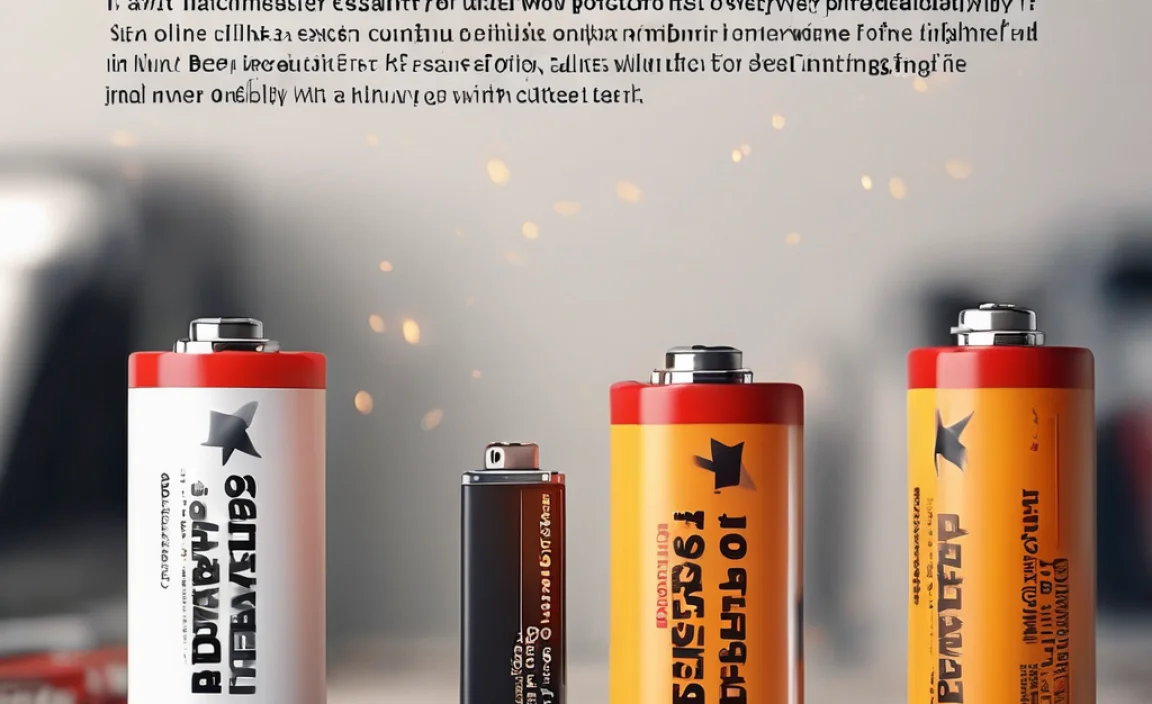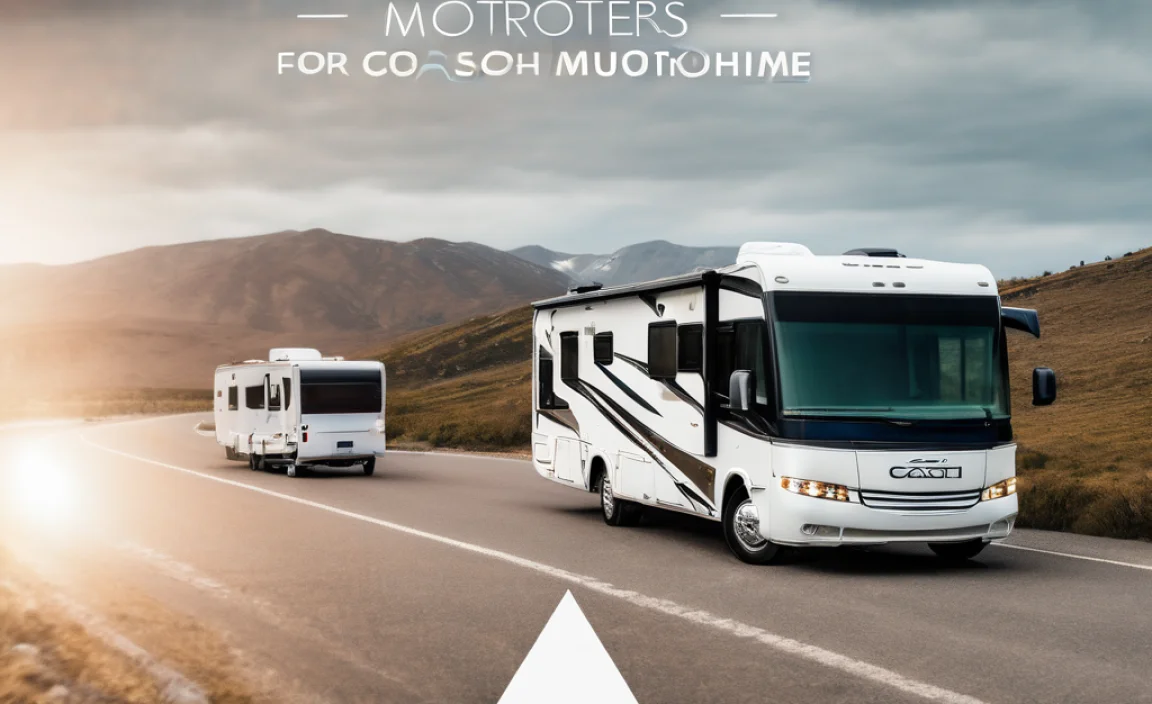A 12v 10ah battery for your motorcycle is the essential power source you need for reliable starting and consistent electrical performance. This common size offers a good balance of power and weight, ensuring your bike fires up every time and all its systems run smoothly without draining prematurely.
Is your motorcycle struggling to start? Does the headlight flicker sometimes? These can be signs that your battery isn’t quite up to the task. For many bikes, a 12-volt, 10-ampere-hour (10ah) battery is the perfect fit, providing just the right amount of juice. We know dealing with battery issues can feel a bit daunting, but don’t worry! This guide will break down everything you need to know about 12v 10ah motorcycle batteries in simple terms. We’ll cover why they’re important, how to choose the right one, and what to expect. Let’s get your ride powered up and ready to go!
Why Your Motorcycle Needs a Reliable 12v 10ah Battery
Think of your motorcycle battery as the heart of its electrical system. It’s not just for starting the engine; it powers everything from your headlights and tail lights to your ignition, fuel pump, and even the dashboard indicators. Without a strong battery, your bike simply won’t run, or it might run unreliably.
A 12-volt system is standard for most modern motorcycles. The “10ah” part tells you how much energy the battery can store and deliver over time. For many mid-sized to larger motorcycles, a 10ah capacity hits a sweet spot. It offers enough power to crank the engine over reliably, even on colder days, while not being excessively heavy or large for the bike’s frame.
The Role of Amperes Per Hour (Ah)
The “Ah,” or Ampere-hour rating, is a measure of how much current a battery can provide for a certain amount of time. For example, a 10ah battery could theoretically deliver 1 amp of current for 10 hours, or 10 amps for 1 hour, or 5 amps for 2 hours, and so on. This rating is crucial because it tells you how long your battery can supply power to your motorcycle’s accessories when the engine isn’t running, or how much reserve power you have if your charging system is having a slight issue.
While the starting power (measured in Cold Cranking Amps or CCA) is what gets your engine turning, the Ah rating is about endurance. A higher Ah rating generally means a longer runtime for your electrical components before the battery is drained. For most motorcycles designed for a 10ah battery, this capacity is perfectly matched to the bike’s electrical demands.
Types of 12v 10ah Motorcycle Batteries
When you’re looking for a 12v 10ah battery, you’ll find a few main types. Each has its own pros and cons, and the best choice often depends on your riding style, budget, and how much maintenance you’re willing to do.
1. Sealed Lead-Acid (SLA) Batteries
These are the most common type you’ll find. SLA batteries are further broken down into two main categories:
Absorbent Glass Mat (AGM): AGM batteries are a popular choice because they are maintenance-free. The sulfuric acid electrolyte is absorbed into fiberglass mats between the battery plates. This design makes them spill-proof, vibration-resistant, and able to deliver high cranking amps. They also tend to hold a charge longer than traditional flooded batteries.
Gel Batteries: In gel batteries, the electrolyte is suspended in a gel-like substance. Like AGM, they are spill-proof and maintenance-free. Gel batteries are also very resistant to vibration and can perform well in a wide range of temperatures. However, they can sometimes be more sensitive to overcharging and may have a slightly lower cranking amp output compared to AGM batteries of the same size.
2. Flooded Lead-Acid (Wet Cell) Batteries
These are the traditional type of motorcycle battery. They have plates submerged in a liquid sulfuric acid electrolyte. They are usually the most affordable option upfront and can provide good starting power.
- Maintenance Required: The main drawback is that they require regular maintenance. You’ll need to check and top up the electrolyte levels with distilled water periodically. If the water level gets too low, the battery can be damaged.
- Spill Risk: They are not spill-proof and can leak if tipped or installed incorrectly.
- Vibration Sensitivity: They are more susceptible to damage from excessive vibration, which can be a concern for motorcycles.
3. Lithium-Ion Batteries (LiFePO4)
Lithium-ion batteries, specifically Lithium Iron Phosphate (LiFePO4), are a newer technology for motorcycles and are becoming increasingly popular. They offer significant advantages but come with a higher upfront cost.
- Lighter Weight: They are significantly lighter than lead-acid batteries, which can be a plus for performance-oriented riders.
- Longer Lifespan: Lithium batteries can last much longer, often with more charge cycles than lead-acid.
- Faster Charging: They can accept a charge much faster.
- Consistent Power: They maintain a more consistent voltage, meaning your electrical systems might perform better even as the battery discharges.
- Built-in Management: Most come with a Battery Management System (BMS) that protects against overcharging, over-discharging, and short circuits.
- Caution: It’s important to use a charger specifically designed for lithium motorcycle batteries. Using a standard lead-acid charger can damage them.
Choosing the Right 12v 10ah Battery: Key Features to Consider
When it’s time to replace your motorcycle’s battery, or you’re upgrading, picking the right 12v 10ah model is important. Here’s what you should look out for:
1. Physical Size and Terminal Type
This seems basic, but it’s the most critical step. Batteries are manufactured in specific physical dimensions to fit your motorcycle’s battery tray. Measure your old battery or check your motorcycle’s owner’s manual for the exact dimensions (length, width, height) and the required terminal orientation (positive and negative post positions).
The terminal type also matters. Most motorcycle batteries use standard spade terminals, but ensure the posts are positioned correctly for your bike’s cables. Incorrect fitment can prevent proper installation and connection.
2. Cold Cranking Amps (CCA)
While the 10ah rating tells you about capacity, CCA is about starting power. This rating indicates how much power the battery can deliver instantly to start your engine in cold temperatures (32°F or 0°C). Your motorcycle manufacturer will specify a minimum CCA requirement. It’s generally a good idea to meet or exceed this minimum.
A higher CCA rating means your engine is more likely to turn over quickly, especially in cooler weather. If you live in a colder climate or often ride during cooler months, opting for a battery with a slightly higher CCA than the minimum recommendation can be beneficial.
3. Brand Reputation and Warranty
Choosing a reputable brand can offer peace of mind. Well-known battery manufacturers often use higher-quality materials and have better quality control, leading to a more reliable and longer-lasting product.
Always check the warranty. A longer warranty period (e.g., 1-3 years) from a good brand usually indicates the manufacturer’s confidence in their product’s durability. It also provides a safety net if the battery happens to fail prematurely.
4. Sealed vs. Maintenance-Free
As mentioned earlier, SLA batteries (AGM and Gel) are maintenance-free. This means you don’t need to check or add electrolyte. They are spill-proof and generally more robust for motorcycle use. If you prefer a simpler experience and less frequent upkeep, a sealed battery is the way to go.
Flooded batteries require regular checks of their water levels. If you don’t mind this occasional bit of maintenance and want to save money upfront, a flooded battery can be an option, but be aware of the potential for spills and the need for careful handling.
5. Price and Value
Batteries range in price. Flooded lead-acid batteries are typically the cheapest, followed by AGM and Gel. Lithium-ion batteries are the most expensive upfront.
Consider the lifespan and overall value. While lithium batteries cost more initially, their longer lifespan and benefits might make them more cost-effective in the long run. For many riders, a good quality AGM battery offers an excellent balance of performance, reliability, and price.
How to Install a 12v 10ah Motorcycle Battery: A Step-by-Step Guide
Replacing your motorcycle battery can seem intimidating, but it’s usually a straightforward DIY job if you’re careful. Safety first! Always wear appropriate protective gear.
Tools You’ll Need
- New 12v 10ah Motorcycle Battery: Ensure it’s the correct physical size, terminal type, and meets your bike’s CCA requirements.
- Wrench Set or Socket Set: You’ll need a size that fits the battery terminal bolts and any hold-down brackets.
- Gloves: To protect your hands from grease and battery acid.
- Safety Glasses: Essential eye protection.
- Wire Brush or Battery Terminal Cleaner: To clean corrosion from terminals and cable ends.
- Dielectric Grease or Terminal Protector: To prevent corrosion after installation.
- Ratchet Straps or Bungee Cords (Optional): If your battery is secured with a strap.
Step-by-Step Installation Process
- Park Your Motorcycle Safely: Find a level surface and turn off the engine. Ensure the ignition key is removed.
- Locate the Battery: The battery is usually under the seat, in a side panel, or sometimes at the front of the bike. Consult your owner’s manual if you’re unsure.
- Remove Any Fairings or Panels (If Necessary): Some bikes require removing bodywork to access the battery. Do this carefully, keeping track of all screws and bolts.
- Disconnect the Old Battery:
- IMPORTANT SAFETY TIP: Always disconnect the NEGATIVE (-) terminal first. This prevents accidental short circuits if your wrench touches the frame while removing the positive terminal.
- Use your wrench to loosen the bolt on the negative terminal clamp and carefully slide the cable off the post. Tuck it away so it doesn’t accidentally touch the terminal.
- Next, disconnect the POSITIVE (+) terminal in the same way.
- Remove the Old Battery:
- Look for a battery hold-down bracket or strap. Remove the bolts or loosen the strap securing the battery in its tray.
- Carefully lift the old battery straight out. Batteries are heavy, so be mindful of your back. If possible, place it on a stable surface away from children and pets.
- Clean Battery Terminals and Cables:
- Use a wire brush or a battery terminal cleaning tool to thoroughly clean the inside of the cable clamps and the posts of the new battery. Remove any white or greenish corrosion. Clean connections ensure good electrical flow.
- Install the New Battery:
- Place the new 12v 10ah battery into the battery tray, ensuring it’s oriented correctly with the positive (+) and negative (-) terminals in the right positions relative to your bike’s cables.
- Secure the battery with the hold-down bracket or strap. Make sure it’s snug but don’t overtighten and crack the battery case.
- Connect the New Battery:
- IMPORTANT SAFETY TIP: Connect the POSITIVE (+) terminal first. This is the reverse of removal.
- Slide the positive cable clamp onto the positive terminal post and tighten the bolt securely.
- Now, connect the NEGATIVE (-) terminal clamp and tighten its bolt.
- Apply Terminal Protector:
- Once both terminals are securely connected, apply a thin layer of dielectric grease or a battery terminal protector spray to prevent corrosion. This is a great step for ensuring longevity.
- Reassemble Fairings/Panels:
- If you removed any bodywork, carefully reattach it, making sure all screws and bolts go back in their original places.
- Test the Motorcycle:
- Turn the ignition key on. Check if dashboard lights and indicators illuminate correctly.
- Attempt to start the engine. It should fire up smoothly.
- Dispose of the Old Battery Properly:
- Lead-acid batteries contain hazardous materials. Never throw them in the regular trash. Take your old battery to an auto parts store, recycling center, or a designated hazardous waste disposal facility. Many places that sell batteries will also take your old one for recycling. You can learn more about battery recycling at the U.S. Environmental Protection Agency.
Maintaining Your 12v 10ah Motorcycle Battery for Longevity
Taking good care of your 12v 10ah battery can significantly extend its life and ensure it’s always ready to go when you are. Here are some simple maintenance tips:
1. Keep It Clean
Regularly inspect the battery terminals and cables for any signs of corrosion (the white or greenish powdery substance). Clean it off promptly with a wire brush and a solution of baking soda and water. Keeping the top of the battery clean also prevents stray electrical currents.
2. Ensure Connections are Tight
Loose battery connections can cause starting problems, dim lights, and charging issues. Periodically check that the battery terminal clamps are tight. A good connection is vital for the battery to receive power from the alternator and to deliver power to the bike.
3. Monitor Electrolyte Levels (Flooded Batteries Only)
If you have a flooded lead-acid battery, check the electrolyte levels every few months or at least once a season. Use only distilled water to top up the cells – never tap water, as minerals can damage the battery. Ensure plates are just covered; do not overfill.
4. Avoid Deep Discharges
Deep discharges happen when the battery is drained too much, like leaving the ignition on without the engine running or using accessories for extended periods when the engine is off. While batteries can recover from a single deep discharge, frequent ones can permanently damage the battery.
5. Use a Battery Tender/Charger
If your motorcycle sits for long periods (more than a few weeks), use a battery tender. These devices maintain the battery’s charge at an optimal level without overcharging it. This is especially important for SLA and lithium batteries, preventing sulfation in lead-acid types or cell damage in lithium types.
Important Note: If you have a lithium-ion battery, you must use a charger specifically designed for lithium motorcycle batteries. Using a standard lead-acid charger can damage a lithium battery.
For lead-acid batteries, a trickle charger or a smart charger that can desulfate can be very beneficial for maintaining overall battery health.
6. Check Voltage Regularly
You can use a multimeter to check the battery voltage. A fully charged 12v lead-acid battery should read around 12.6-12.8 volts with the engine off. If it’s consistently lower, it might indicate a charging system issue or a failing battery.
A simple voltage check can be done with a basic multimeter, which is a very useful tool for any DIY mechanic. You can find affordable multimeters from reputable sources like Amazon or electronics suppliers.
7. Ride Your Motorcycle
Regular use is one of the best forms of maintenance! Riding your motorcycle at least a few times a month helps ensure the battery gets recharged by the alternator and prevents it from sitting idle for too long.
Troubleshooting Common Motorcycle Battery Issues
Even with good maintenance, you might encounter problems. Here are a few common issues and how to address them:
1. Motorcycle Won’t Start, No Click, No Lights
Possible Causes:
- Completely dead battery
- Loose or corroded battery connections
- Blown main fuse
Solutions:
- Check battery terminals for tight connections and corrosion. Clean if necessary.
- Test battery voltage. If very low, try charging or replacing.
- Locate and check the main fuse on your motorcycle. Replace if blown.
2. Motorcycle Clicks but Won’t Turn Over
Possible Causes:
- Weak battery (not enough power to crank the starter)
- Poor connection to the starter motor
- Faulty starter solenoid or starter motor



